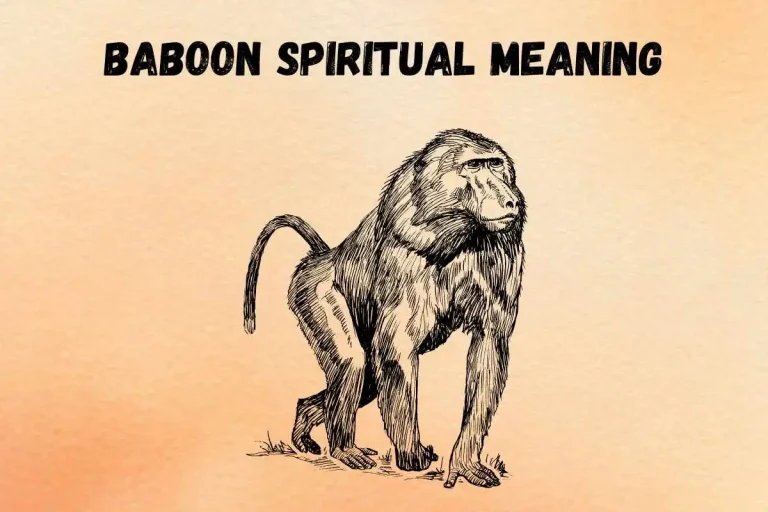Xerus Spiritual Meanings and Symbolism

Xerus is a type of ground squirrel found in Africa and parts of the Middle East. These lively animals come in different species, each with unique traits that make them fascinating to watch.
Known for their striped fur and bushy tails, Xerus are built to survive in tough environments like deserts and grasslands. They’re quick, alert, and always on the move, searching for food.
These squirrels are expert foragers, gathering seeds and plants to store for later. Their sharp senses help them stay safe from predators while they hunt for meals.
Xerus live in complex burrows, which act as both homes and social spaces. They communicate with chirps and playful antics, showing how connected they are to their group.
By studying Xerus behavior, we learn how they contribute to their ecosystems. Their habits reveal deeper meanings about adaptability, community, and survival.

Key Takeaways
- Xerus symbolizes adaptability, resourcefulness, and keen observation, representing the importance of flexibility and attunement to one’s surroundings.
- Xerus embodies the value of community, cooperation, and social interconnectedness, serving as a metaphor for the inherent human need for connection and belonging.
- Xerus’ diligence and resourcefulness in gathering and storing food inspire emulation of an industrious spirit and a commitment to preparedness.
- Xerus’ remarkable ability to adapt to diverse environments reflects the virtue of cultivating a mindset of adaptability and resilience when facing challenges.
What Does It Mean When You See a Xerus?
Spotting a Xerus can be more than just a chance encounter—it might carry a symbolic message. Many cultures see these animals as signs of adaptability and awareness.
Their ability to live in different environments reminds us to stay flexible and resourceful. Just like the Xerus, we should pay attention to changes around us and adjust when needed.
These squirrels are also fast and agile, symbolizing quick thinking and action. Their social burrows teach us about teamwork and the importance of community.
If a Xerus crosses your path, it could be a nudge to stay alert, work with others, and plan ahead. Different traditions may interpret it in various ways, but its lessons are always meaningful.
Xerus Symbolism
In many cultures, the Xerus represents adaptability and sharp instincts. Its survival skills remind us to stay observant and ready for challenges.
The way Xerus live in groups highlights the value of cooperation and strong relationships. Their shared burrows show how teamwork makes life easier for everyone.
These squirrels also store food for the future, symbolizing preparation and wise resource management. Their stripes can even represent how all life is connected in nature.
Whether as a spiritual guide or a natural wonder, the Xerus teaches lessons about resilience, awareness, and unity. Its symbolism encourages us to live thoughtfully and stay connected to those around us.
7 Spiritual Meanings of Xerus
1. Diligence and Resourcefulness
The xerus is small, but it works with a powerful drive. This tiny ground squirrel is always busy, collecting food and storing it carefully for the future. Watching it prepare for the colder seasons shows how much effort and thought it puts into survival.
It doesn’t act without a plan. Xerus carefully chooses what it needs and remembers where it keeps everything. That kind of smart planning shows how good it is at managing time and energy.
You can often see it moving quickly and skillfully through the land. Whether it’s hopping across rocks or moving through grass, the xerus wastes no time. It knows where to go and how to get there fast.
Because of this, the xerus is a symbol of smart work and focus. It teaches that staying alert and prepared can help us do better in life. And its strong sense of purpose reminds us to stay dedicated to our goals.
2. Adaptability and Resilience
The xerus doesn’t live in just one type of place. It can make a home in dry deserts or green savannas. This shows how well it can adjust to different surroundings.
No matter where it ends up, the xerus finds a way to survive. It digs deep burrows that keep it safe from danger. These tunnels also give it shelter when the weather gets rough.
Its ability to keep going in hard times shows us how important it is to stay strong. Life isn’t always easy, but the xerus reminds us that we can face challenges with calm and courage.
Even when the world changes, the xerus finds a way to keep moving forward. Its behavior teaches that when we stay flexible and hold onto our inner strength, we can succeed in tough times too.
3. Community and Togetherness
Xerus don’t live alone. They form groups and look out for each other. Every member plays a part in keeping the whole group strong and safe.
They share warning calls when danger is near. They even take time to groom each other and play together. These actions help build trust and love in their small communities.
This reminds us how powerful friendship and teamwork can be. Life is easier when we have others to share it with. Whether it’s family, friends, or neighbors, we all do better when we help each other.
The xerus teaches that strong bonds and care for others bring happiness. Being part of a caring group gives us support when life feels hard.
4. Playfulness and Curiosity
If you ever watch a xerus for a while, you’ll notice how curious it is. It loves to explore and check out new things in its environment.
This playful side is more than just fun to watch. It shows that even hard-working creatures need time to enjoy their surroundings. The xerus doesn’t ignore the world—it engages with it fully.
Its excitement for learning new things reminds us to keep exploring. Even small things, like a leaf or a sound, can bring joy when we slow down and really notice them.
By staying curious, we open the door to learning and growth. The xerus shows us that asking questions and staying excited about life keeps the spirit young and joyful.
5. Sustainability and Harmony
The xerus knows how to live without causing harm to its environment. It only takes what it needs and uses everything wisely.
Its burrows are shared with others, and food is often found through group effort. This kind of life shows balance—where everyone works together and nature stays healthy.
It doesn’t need to control its surroundings. Instead, it fits into the land naturally. Whether in dry places or green fields, it makes a home without damaging what’s already there.
The xerus teaches us to care for nature and work together to protect it. Living in balance with the earth helps all living things, including us.
6. Intuition and Awareness
The xerus doesn’t miss a thing. Its senses are sharp, and it can feel when something’s not right. This helps it stay safe and make smart choices.
This quiet awareness is something we can learn from. When we pay close attention, we notice things that we might miss in a rush.
The xerus uses its instincts to survive. It doesn’t always need loud signs to know what to do—it trusts its inner feelings. That’s a reminder for us to listen to our gut and stay alert.
By being present and paying attention, we can connect more deeply with the world around us. The xerus shows that stillness and focus can lead to wisdom.
7. Gratitude and Appreciation
Even with its busy life, the xerus is deeply connected to the earth. It uses the land for shelter and food, always respecting the space it lives in.
This shows a kind of quiet thankfulness. The xerus doesn’t take more than it needs, and it always gives back in its own way, like helping keep the soil healthy through digging.
When we watch this animal, we’re reminded to slow down and notice the beauty around us. The world gives us so much—food, air, sunlight—and we often forget to be thankful.
The xerus invites us to notice life’s small wonders. Being grateful helps us feel more at peace and more connected to everything that surrounds us.
Xerus Symbolism in Different Cultures and Contexts
The xerus, also known as the ground squirrel, might look like an ordinary little animal, but it carries powerful meanings in many cultures. People from around the world have looked at this small creature and seen much more than just fur and whiskers. They’ve seen symbols of hard work, community, and survival.
In different parts of the world, the xerus shows up in stories, beliefs, and even spiritual teachings. Whether it’s Native American stories or African traditions, the xerus plays a unique role. Each culture adds its own layer of meaning to what this small animal represents.
You might be surprised to learn how deeply people connect with animals like the xerus. It’s not just about what the animal does in the wild—it’s also about what it teaches us. That’s why many people think the xerus holds valuable life lessons.
Let’s explore what different cultures believe about the xerus and why it continues to be an important symbol in so many traditions.
Native American Culture
In Native American cultures, the xerus is often seen as a symbol of diligence and teamwork. These squirrels are known for how well they work together and how carefully they store food to prepare for winter. That kind of smart planning is something many tribes admired.
Some tribes, like the Navajo, saw the xerus as part of the cycle of life. Its constant moving, digging, and preparing mirrored the way life is always changing and flowing. The xerus reminded people to stay active and ready for what’s next.
For the Hopi people, this small animal was a totem of resilience and hard work. It wasn’t only about gathering food. It was about living in harmony with nature and doing your part to support your community.
You could also find images and stories of the xerus in Native art and ceremonies. This shows how deeply the animal was respected and how its lessons were passed down through generations.
Celtic Culture
In Celtic culture, the xerus had a lot to do with preparation and self-reliance. People admired how the squirrel gathered food and made sure its family was safe and ready for winter. That kind of thinking matched the Celtic value of taking care of one another through smart planning.
The xerus also had a strong connection to the land. Just like the squirrel creates underground homes with many tunnels, the Celts believed in staying connected to the earth and understanding its rhythms. They saw the land as sacred, and the xerus reminded them to live in tune with it.
Celtic people respected how the xerus stayed alert and moved quickly. These traits were seen as signs of someone who is wise and careful, which were important qualities in their communities.
Because of all this, the xerus wasn’t seen as a simple animal. It was a symbol of the values that helped people survive and support one another in ancient times.
Nordic Culture
In the Nordic world, people also looked up to the xerus for its survival skills. Living in a cold, harsh place wasn’t easy, so they respected any creature that could handle tough conditions. The xerus was seen as strong, independent, and always ready for winter.
Nordic cultures believed that the squirrel’s habit of collecting food showed foresight and smart thinking. These were important values because being prepared could mean the difference between life and death in long, snowy winters.
The squirrel’s bold energy reminded them of their own spirit of adventure. The Nordic people, like the Vikings, were known for exploring new lands, and they admired animals that were curious and fearless.
The xerus also appeared in stories and traditions as a guide or helper. People believed it could teach them how to face challenges and make careful decisions.
African Culture
In many African cultures, the xerus is more than an animal—it’s a messenger. Some believe it brings signs from the spirit world or signals a big change coming. Its movements and behavior are watched closely in certain regions.
People in West Africa, for example, think the xerus warns of new beginnings or changes in fortune. Its alertness and quick moves suggest it knows what’s coming before anyone else does.
The xerus’s digging habits are also symbolic. Some believe it connects the living with the spiritual world, especially with ancestors. This makes it important during rituals and ceremonies where people seek guidance from beyond.
Because it’s seen as a lucky and clever animal, the xerus appears in stories that teach moral lessons or help explain natural events. Its presence brings hope and encouragement to face life’s changes.
Eastern Culture
In Eastern cultures, the xerus doesn’t appear as often, but when it does, it has special meaning. In parts of India, the ground squirrel is linked to Vishnu, a major Hindu god. He’s shown resting with a xerus nearby, hinting at protection and sharp awareness.
This connection gives the xerus a sacred role, especially in Hindu beliefs. It’s seen as a helper that watches for danger and keeps the divine safe. That’s a big job for such a small creature.
In Chinese beliefs, some people see the xerus as a symbol of vigilance. Since it’s always alert and aware of its surroundings, it reminds people to stay sharp and pay attention to what’s happening around them.
While the xerus isn’t as popular in all Eastern stories, its unique qualities still make it a meaningful symbol in the places where it does appear.
Hindu Culture
Within Hinduism, the xerus has deep spiritual ties. It’s closely connected to Vishnu, who protects the world from chaos. The ground squirrel’s role here is not random—it’s a sign of being constantly aware and ready to act.
The xerus also links to Lakshmi, the goddess of wealth and prosperity. Its quick thinking and sharp senses match the energy of attracting good fortune and holding onto it.
People also look at the squirrel’s habit of saving food as a lesson. It shows the value of planning ahead and using resources wisely. This matches Hindu teachings that encourage balance and smart living.
Altogether, the xerus reflects divine energy, reminding followers to stay focused, careful, and prepared in their spiritual and everyday lives.
Arts and Literature
The xerus has made its way into art and literature, showing up in many forms across time and place. In ancient Egypt, it symbolized life cycles and fertility, while in Greek and Roman myths, it was tied to the energy of nature and wildness.
Writers have also used the xerus to reflect on human life. Its behaviors are often used to describe strength, growth, and adaptability. These ideas help make stories more meaningful and relatable.
In modern books, authors like Zora Neale Hurston and Margaret Atwood have included the xerus to symbolize personal change and resilience. The animal becomes a mirror of the characters’ journeys and emotions.
These appearances in art and stories show how powerful this small creature can be when it comes to expressing big ideas.
Mythology
The xerus pops up in many myths and folk tales, often as a clever or watchful figure. In ancient Egypt, it was tied to Ra, the sun god, and known for its bright energy and nonstop motion.
In African tales, the xerus sometimes played the trickster, outsmarting others and using its brain to get ahead. These stories were a way to show that being clever could be just as powerful as being strong.
In Native American stories, it became a guardian of the land, showing that balance between people and nature is key. In Zen Buddhism, it served as a gentle reminder to stay aware and flow with life’s changes.
Whether it’s helping gods, playing tricks, or guiding people, the xerus in mythology always leaves a strong impression.
Xerus Biblical Meanings
The Bible doesn’t talk directly about the xerus, but its traits can still teach lessons that line up with Christian beliefs. One of the clearest is the idea of preparation. The xerus gathers food before winter, showing smart planning.
This reflects verses like Proverbs 6:6–8, which talk about the ant working hard in summer. The xerus does the same, reminding believers to stay active and plan ahead.
Living in groups and watching out for danger, the xerus also shows the value of community and protection, ideas that appear in many parts of the Bible.
Its alertness connects with Bible verses that urge people to “be watchful,” such as 1 Peter 5:8. Even though it’s not named, the xerus offers helpful symbols for Christian life.
Spiritual Meaning of Dream About Xerus
Dreaming of a xerus might mean you’re being reminded to stay prepared. These animals always think ahead, and in dreams, they could be nudging you to do the same in your life.
They can also point to the need for resourcefulness. Are you using what you have wisely? Are you looking ahead and setting yourself up for success?
The xerus in your dream might also be calling you to stay alert. Maybe there’s something important happening that you haven’t noticed yet. Its sharp senses suggest you should start paying closer attention.
Finally, the dream could be showing you your own inner strength. Like the xerus, you may be more adaptable than you think, even in hard times.
Xerus Spirit Animal, Totem, and Power Animal
If the xerus is your spirit animal, it likely shows up to remind you of the importance of planning, focus, and flexibility. This small creature might be guiding you to stay ready for changes and keep your eyes open for chances to grow.
As a totem animal, the xerus encourages smart choices and careful steps. It’s not about rushing—it’s about thinking things through and moving with purpose.
As a power animal, it helps build your inner strength. Even when life gets tough, the xerus teaches you how to dig deep, stay grounded, and keep moving forward.
With the xerus as your guide, you may find it easier to stay calm, stay organized, and trust in your own ability to figure things out.
Final Thoughts
The xerus might be small, but it carries big meanings across many cultures. From ancient traditions to modern dreams, it teaches us to stay ready, work together, and make smart choices.
Its behaviors and traits remind us of the power of community, planning, and resilience. These are lessons that anyone can learn from, no matter where they live.
Whether seen as a sacred animal, a spirit guide, or a clever trickster, the xerus has earned its place as a symbol of survival and wisdom. Its story continues to inspire people all over the world.
You Might Also Like
1) 10 Spiritual Meanings of A Squirrel Crossing Your Path
2) Woodchuck Spiritual Meanings and Symbolism
3) Hedgehog Spiritual Meanings and Symbolism
4) Anteater Spiritual Meanings and Symbolism
5) Eland Spiritual Meanings and Symbolism





